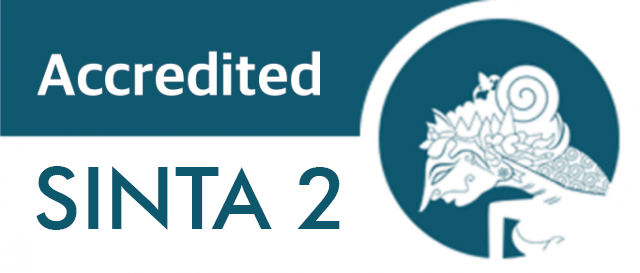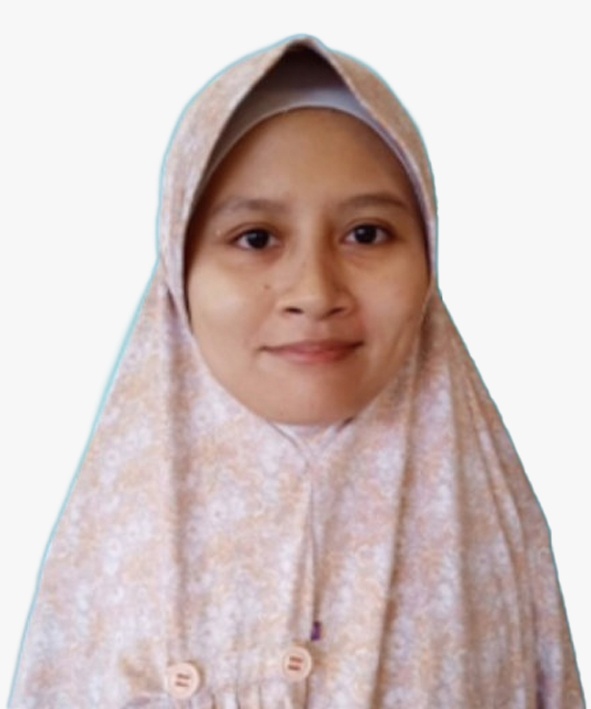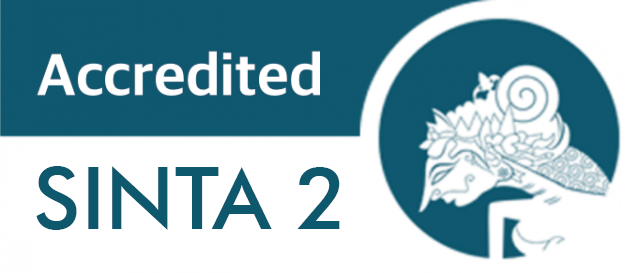The Effectiveness of a Training Program for Reducing Speech Disorders Among Kindergarten Children
Introduction: This study aimed to develop and evaluate a comprehensive training program for reducing speech disorders among Kurdish-speaking kindergarten children, and to examine differences in parental evaluations of intervention outcomes. Despite the critical importance of early intervention for speech disorders, research in the Kurdistan Region is extremely limited, creating a significant gap in culturally and linguistically appropriate intervention approaches for Kurdish-speaking children. Methods: Using a quasi-experimental pre-test/post-test design, children with speech disorders were divided into experimental and control groups, with the experimental group receiving a training program over eight weeks while the control group received no intervention. Assessment was conducted using a validated speech disorders scale measuring pronunciation, fluency, voice, expressive and receptive language, and social-linguistic interaction. Results: Statistical analysis revealed significant improvements in the experimental group across all dimensions with large effect sizes, and significant differences between experimental and control groups in post-test scores. Parental evaluations showed high consistency, with only minor discrepancies between fathers’ and mothers’ assessments in specific dimensions. Conclusion: These findings demonstrate the efficacy of structured, comprehensive early interventions for speech disorders in Kurdish-speaking kindergarten children, highlighting the importance of culturally adapted intervention approaches and suggesting that similar programs should be implemented in educational settings throughout the region.
Introduction
Speech disorders in early childhood represent a significant developmental concern affecting approximately 5-10% of preschool children globally[1]. These disorders encompass a range of difficulties including articulation problems, fluency disruptions, voice quality issues, and language delays that affect both expressive and receptive capabilities[2]. Early intervention during the preschool years is critical due to heightened neuroplasticity during this developmental period, with interventions implemented before age six demonstrating significantly higher efficacy rates[3].
The relationship between speech disorders and broader developmental outcomes has been well-documented in longitudinal research. Children with early speech sound disorders are at elevated risk for reading disabilities, with approximately 30-40% developing subsequent literacy challenges[4]. Children with speech impairments often experience difficulties with peer relationships and may develop negative self-perceptions related to their communication abilities, highlighting the social-emotional implications of these disorders[5].
Intervention approaches for speech disorders have evolved considerably, with current best practices emphasizing comprehensive, holistic programs that address multiple dimensions of speech and language functioning. Research demonstrates that interventions combining direct articulation training with phonological awareness activities yield superior outcomes compared to single-focus approaches[6]. Parental involvement represents another critical component in effective intervention models, as shown in meta-analyses revealing that interventions incorporating parent training components achieved effect sizes nearly twice as large as clinician-only approaches[7].
Cultural and linguistic contexts significantly influence both the manifestation of speech disorders and the effectiveness of intervention approaches. Linguistic features specific to particular languages may influence both the types of speech errors observed and the response to treatment[8]. Research on speech intervention programs in the Kurdistan Region of Iraq specifically is extremely limited, despite the unique linguistic characteristics of Kurdish and the particular educational context of this region. Phonological development patterns in Arabic and Kurdish-speaking children differ from those documented in English-speaking populations, suggesting the need for culturally and linguistically adapted assessment and intervention approaches[9].
Building on this foundation, this study aims to identify the effectiveness of the training program in reducing speech disorders among kindergarten children. The research employs a null hypothesis framework examining four key dimensions: there are no statistically significant differences between the experimental group that received the training program and the control group in the post-test measurement of speech disorders; there are no statistically significant differences between pre-test and post-test measures of speech disorders within the experimental group; there are no statistically significant differences between the experimental and control groups in the degree of improvement (development scores) in speech disorders; and there are no statistically significant differences between fathers' and mothers' evaluations of their children's speech disorders.
The study was conducted during the academic year 2024-2025, with the training program implemented over an eight-week period from January 2, 2025, to February 23, 2025, with two sessions per week. The research was limited to kindergartens in Sheikhan District of Duhok Governorate in the Kurdistan Region of Iraq, specifically Sheikhan Kindergarten and Zelal Kindergarten. Participants were kindergarten children (aged 4-6 years) diagnosed with speech disorders in the selected kindergartens, along with their parents who participated in the evaluation process. The research focused on speech disorders including pronunciation and sounds, fluency, voice, expressive language, receptive language, and social-linguistic interaction, as measured by the speech disorders scale developed for this study. The intervention was limited to the training program designed specifically for this research. Speech disorders in young children represent a diverse set of communication difficulties that can significantly impact development across multiple domains. Research into the prevalence, characteristics, and treatment of these disorders has expanded considerably over the past two decades, with increasing emphasis on early intervention and holistic approaches.
Epidemiological studies indicate that speech disorders affect approximately 5-12% of preschool children, with somewhat higher rates among boys compared to girls[10]. The classification of these disorders has evolved substantially, moving from broad categories to more nuanced diagnostic frameworks[11]. Influential classification systems distinguish between articulation disorders, phonological delay, consistent phonological disorder, and inconsistent phonological disorder. This differentiation has proven valuable for both assessment and treatment planning; as different subtypes respond optimally to different intervention approaches[12].
In a large-scale study of 1,494 preschool children, the most common speech difficulties involved phonological processes such as cluster reduction, final consonant deletion, and liquid simplification. These patterns were generally consistent across linguistic communities, though language-specific variations were noted[13]. Cross-linguistic reviews of 26 languages found that while certain developmental phonological processes appear universal, the specific manifestations vary according to the phonological properties of each language, highlighting the importance of linguistically appropriate assessment tools[14].
The consequences of untreated speech disorders extend well beyond communication difficulties. Longitudinal studies tracking children with early speech sound disorders through adolescence found significantly elevated rates of reading difficulties, with approximately 40% demonstrating below-average reading achievement by third grade[15]. These findings align with the critical age hypothesis which suggests that speech disorders persisting beyond age 5.5 years pose particular risks for literacy development[16]. The impact of speech disorders on children's participation in everyday activities and social interactions includes restrictions in classroom participation, peer relationships, and extracurricular activities[17]. Children with speech disorders often report feelings of frustration, embarrassment, and social exclusion. Even mild speech disorders can significantly affect children's quality of life and self-perception when they become aware of communication differences between themselves and peers[18].
The relationship between speech disorders
S. McLeod and E. Baker, Children’s speech: An evidence-based approach to assessment and intervention. 2017.
B. Dodd, Differential Diagnosis and Treatment of Children with Speech Disorder. Wiley, 2013. [Online]. Available: https://books.google.co.id/books?id=efOrRCx4H88C
J. Law, J. Boyle, F. Harris, A. Harkness, and C. Nye, “Prevalence and natural history of primary speech and language delay: findings from a systematic review of the literature,” Int. J. Lang. Commun. Disord., vol. 35, pp. 165–188, 2010, doi: 10.1111/j.1460-6984.2000.tb00001.x.
B. Dodd, “Differential Diagnosis of Pediatric Speech Sound Disorder,” Curr. Dev. Disord. Reports, vol. 1, 2014, doi: 10.1007/s40474-014-0017-3.
J. Mccormack, S. McLeod, L. McAllister, and L. Harrison, “A systematic review of the association between childhood speech impairment and participation across the lifespan,” Int. J. Speech. Lang. Pathol., vol. 11, 2009, doi: 10.1080/17549500802676859.
J. Broomfield and B. Dodd, “Is speech and language therapy effective for children with speech/language impairment? A report of an RCT,” Int. J. Lang. Commun. Disord., vol. 46, pp. 628–640, 2011, doi: 10.1111/j.1460-6984.2011.00039.x.
M. Y. Roberts and A. P. Kaiser, “Early intervention for toddlers with language delays: a randomized controlled trial.,” Pediatrics, vol. 135, no. 4, pp. 686–693, Apr. 2015, doi: 10.1542/peds.2014-2134.
S. McLeod, S. Verdon, and C. Bowen, “International aspirations for speech-language pathologists’ practice with multilingual children with speech sound disorders: development of a position paper.,” J. Commun. Disord., vol. 46, no. 4, pp. 375–387, 2013, doi: 10.1016/j.jcomdis.2013.04.003.
E. Al-Saidat, “Phonological Analysis of English Phonotactics: A Case Study of Arab Learners of English,” ANGLOGERMANICA ONLINE, vol. 5, pp. 14–25, 2010, doi: 10.5750/bjll.v3i0.26.
Y. Wren, L. L. Miller, T. J. Peters, A. Emond, and S. Roulstone, “Prevalence and Predictors of Persistent Speech Sound Disorder at Eight Years Old: Findings From a Population Cohort Study.,” J. Speech. Lang. Hear. Res., vol. 59, no. 4, pp. 647–673, Aug. 2016, doi: 10.1044/2015_JSLHR-S-14-0282.
J. E. Bernthal, N. W. Bankson, and P. Flipsen, Articulation and Phonological Disorders: Speech Sound Disorders in Children. Pearson, 2013. [Online]. Available: https://books.google.co.id/books?id=sy98LwEACAAJ
S. R. Tambyraja, K. Farquharson, and L. M. Justice, “Phonological processing skills in children with speech sound disorder: A multiple case study approach.,” Int. J. Lang. Commun. Disord., vol. 58, no. 1, pp. 15–27, Jan. 2023, doi: 10.1111/1460-6984.12764.
P. Eadie, A. Morgan, O. C. Ukoumunne, K. Ttofari Eecen, M. Wake, and S. Reilly, “Speech sound disorder at 4 years: prevalence, comorbidities, and predictors in a community cohort of children.,” Dev. Med. Child Neurol., vol. 57, no. 6, pp. 578–584, Jun. 2015, doi: 10.1111/dmcn.12635.
S. McLeod and K. Crowe, “Children’s Consonant Acquisition in 27 Languages: A Cross-Linguistic Review.,” Am. J. speech-language Pathol., vol. 27, no. 4, pp. 1546–1571, Nov. 2018, doi: 10.1044/2018_AJSLP-17-0100.
B. A. Lewis, L. A. Freebairn, A. J. Hansen, S. K. Iyengar, and H. G. Taylor, “School-age follow-up of children with childhood apraxia of speech.,” Lang. Speech. Hear. Serv. Sch., vol. 35, no. 2, pp. 122–140, Apr. 2004, doi: 10.1044/0161-1461(2004/014).
D. V Bishop and C. Adams, “A prospective study of the relationship between specific language impairment, phonological disorders and reading retardation.,” J. Child Psychol. Psychiatry., vol. 31, no. 7, pp. 1027–1050, Nov. 1990, doi: 10.1111/j.1469-7610.1990.tb00844.x.
J. McCormack, S. McLeod, L. J. Harrison, and L. McAllister, “The impact of speech impairment in early childhood: investigating parents’ and speech-language pathologists’ perspectives using the ICF-CY.,” J. Commun. Disord., vol. 43, no. 5, pp. 378–396, 2010, doi: 10.1016/j.jcomdis.2010.04.009.
S. McLeod, L. J. Harrison, and J. McCormack, “The intelligibility in Context Scale: validity and reliability of a subjective rating measure.,” J. Speech. Lang. Hear. Res., vol. 55, no. 2, pp. 648–656, Apr. 2012, doi: 10.1044/1092-4388(2011/10-0130).
J. C. S. Finlay and M. McPhillips, “Comorbid motor deficits in a clinical sample of children with specific language impairment.,” Res. Dev. Disabil., vol. 34, no. 9, pp. 2533–2542, Sep. 2013, doi: 10.1016/j.ridd.2013.05.015.
D. Carson, C. Carson, A. Diefenderfer, and T. Klee, “Differences in Family Characteristics and Parenting Behavior in Families with Language-Delayed and Language-Normal Toddlers,” Infant-Toddler Interv. Transdiscipl. J., vol. 9, 1999.
E. Baker and S. McLeod, “Evidence-based practice for children with speech sound disorders: part 1 narrative review.,” Lang. Speech. Hear. Serv. Sch., vol. 42, no. 2, pp. 102–139, Apr. 2011, doi: 10.1044/0161-1461(2010/09-0075).
D. Almost and P. Rosenbaum, “Effectiveness of speech intervention for phonological disorders: a randomized controlled trial.,” Dev. Med. Child Neurol., vol. 40, no. 5, pp. 319–325, May 1998.
M. Glogowska, S. Roulstone, P. Enderby, and T. J. Peters, “Randomised controlled trial of community based speech and language therapy in preschool children.,” BMJ, vol. 321, no. 7266, pp. 923–926, Oct. 2000, doi: 10.1136/bmj.321.7266.923.
A. L. Williams, “Intensity in phonological intervention: is there a prescribed amount?,” Int. J. Speech. Lang. Pathol., vol. 14, no. 5, pp. 456–461, Oct. 2012, doi: 10.3109/17549507.2012.688866.
M. Y. Roberts and A. P. Kaiser, “The effectiveness of parent-implemented language interventions: a meta-analysis.,” Am. J. speech-language Pathol., vol. 20, no. 3, pp. 180–199, Aug. 2011, doi: 10.1044/1058-0360(2011/10-0055).
S. McLeod and L. J. Harrison, “Epidemiology of speech and language impairment in a nationally representative sample of 4- to 5-year-old children.,” J. Speech. Lang. Hear. Res., vol. 52, no. 5, pp. 1213–1229, Oct. 2009, doi: 10.1044/1092-4388(2009/08-0085).
S. McLeod and S. Verdon, “Tutorial: Speech Assessment for Multilingual Children Who Do Not Speak the Same Language(s) as the Speech-Language Pathologist.,” Am. J. speech-language Pathol., vol. 26, no. 3, pp. 691–708, Aug. 2017, doi: 10.1044/2017_AJSLP-15-0161.
S. Topbas, “A Turkish perspective on communication disorders.,” Logoped. Phoniatr. Vocol., vol. 31, no. 2, pp. 76–88, 2006, doi: 10.1080/14015430500342384.
H. Hambly, Y. Wren, S. McLeod, and S. Roulstone, “The influence of bilingualism on speech production: a systematic review.,” Int. J. Lang. Commun. Disord., vol. 48, no. 1, pp. 1–24, Jan. 2013, doi: 10.1111/j.1460-6984.2012.00178.x.
L. Furlong, M. Morris, T. Serry, and S. Erickson, “Mobile apps for treatment of speech disorders in children: An evidence-based analysis of quality and efficacy.,” PLoS One, vol. 13, no. 8, p. e0201513, 2018, doi: 10.1371/journal.pone.0201513.
T. M. Byun, H. Campbell, H. Carey, W. Liang, T. H. Park, and M. Svirsky, “Enhancing Intervention for Residual Rhotic Errors Via App-Delivered Biofeedback: A Case Study.,” J. Speech. Lang. Hear. Res., vol. 60, no. 6S, pp. 1810–1817, Jun. 2017, doi: 10.1044/2017_JSLHR-S-16-0248.
D. Wales, L. Skinner, and M. Hayman, “The Efficacy of Telehealth-Delivered Speech and Language Intervention for Primary School-Age Children: A Systematic Review.,” Int. J. telerehabilitation, vol. 9, no. 1, pp. 55–70, 2017, doi: 10.5195/ijt.2017.6219.
E. Baker and S. McLeod, “Evidence-based practice for children with speech sound disorders: part 2 application to clinical practice.,” Lang. Speech. Hear. Serv. Sch., vol. 42, no. 2, pp. 140–151, Apr. 2011, doi: 10.1044/0161-1461(2010/10-0023).
N. Thomas-Stonell, B. Oddson, B. Robertson, and P. Rosenbaum, “Predicted and observed outcomes in preschool children following speech and language treatment: parent and clinician perspectives.,” J. Commun. Disord., vol. 42, no. 1, pp. 29–42, 2009, doi: 10.1016/j.jcomdis.2008.08.002.
T. Ratnawati, “Neuropsychiatric Symptoms in Corticosteroid Induced Systemic Lupus Erythematosus (Sle) Patients: a Case Report,” J. Psikiatri Surabaya, vol. 13, pp. 206–213, 2024, doi: 10.20473/jps.v13i2.47788.
R. Kalalo, “The Role and Function of Single Parents in Special Needs Children to Combat Loneliness,” J. Psikiatri Surabaya, vol. 13, pp. 119–124, 2024, doi: 10.20473/jps.v13iS1.62669.
Copyright (c) 2025 Naji Suleiman Suleiman, Bewar Shukri

This work is licensed under a Creative Commons Attribution-ShareAlike 4.0 International License.
1. Copyright of this journal is possession of the Author, by the knowledge of the Editorial Board and Journal Manager, while the moral right of the publication belongs to the author.
2. The journal allows the author(s) to retain publishing rights without restrictions.
3. The articles are published under a Creative Commons Attribution Share-Alike (CC BY-SA) license. Many research funding bodies prefer the CC BY-SA license because it allows for maximum dissemination and re-use of open access materials. Users are free to share (copy, distribute, and transmit) and remix (adapt) the contribution under this license, including for commercial purposes, as long as they attribute the contribution in the manner specified by the author or licensor.




























